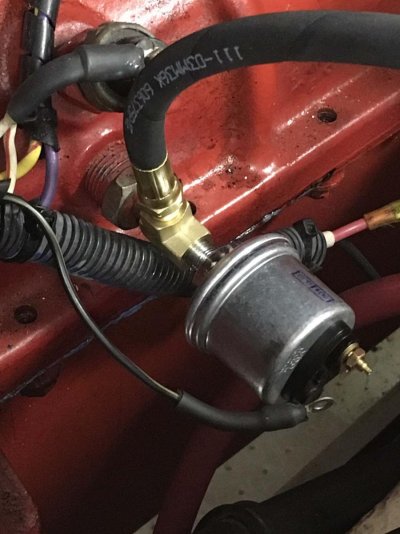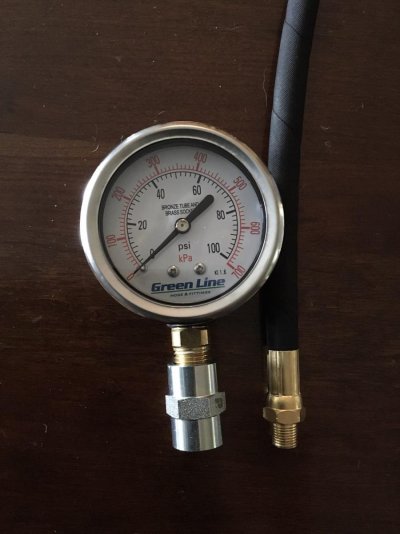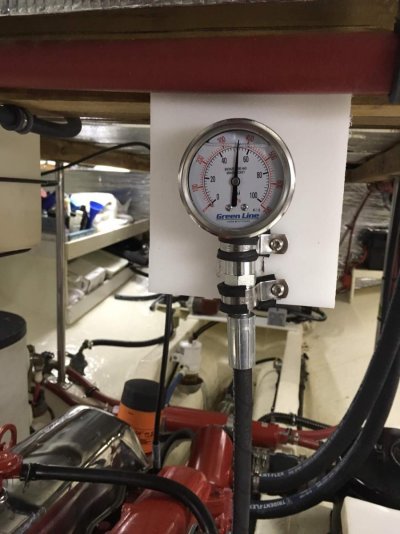JDCAVE
Guru
- Joined
- Apr 3, 2011
- Messages
- 2,902
- Location
- Canada
- Vessel Name
- Phoenix Hunter
- Vessel Make
- Kadey Krogen 42 (1985)
I’m installing a mechanical oil pressure gauge, by putting in a brass “tee” fitting along with the oil pressure sending unit. I’ve got a brass tee, a 3’ grease fitting line (rated 3600 psi) a reducer fitting and a oil filled pressure gauge. Total cost is $25. I asked the guy if this gauge was appropriate for this use and he said yes. Working pressure will be ~50 psi. Is this gauge ok or do I need an automotive one?
Also, the gauge has an instruction on it to cut off a rubber seal a the top, which I find is odd.
Jim


Also, the gauge has an instruction on it to cut off a rubber seal a the top, which I find is odd.
Jim


Last edited:





